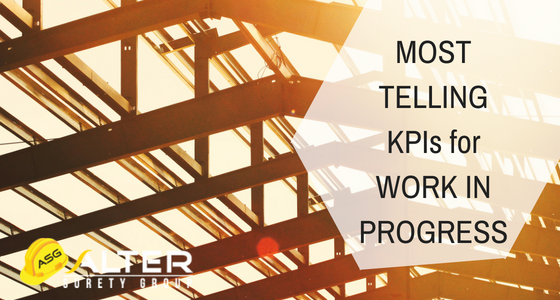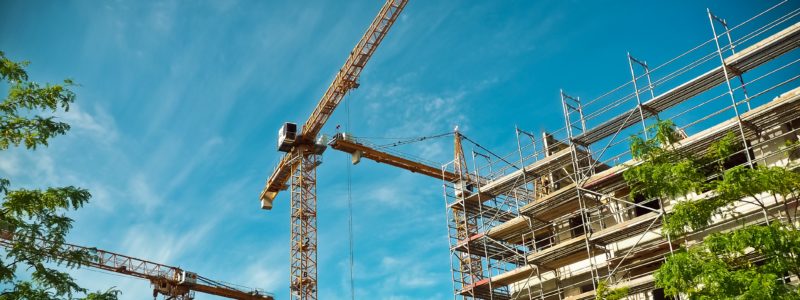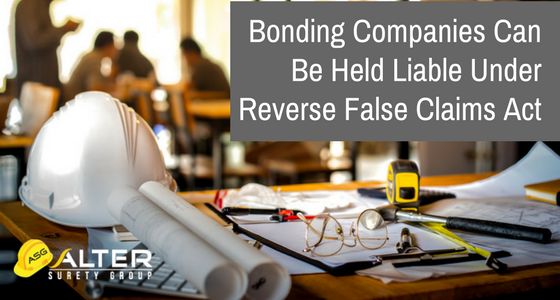
Category: Blog



What does your Percentage of Completion data say about your company?
Work in Progress (WIP) is what a construction company or contractor invests in delivering a completed project, including materials, labor and overhead throughout the process of construction and in all stages of a construction contract, right? Well, yes and no. Those are definitely components of a WIP.
In reality, a WIP translates to numbers or, more accurately, an accounting schedule. It is a moniker attached to the balance of costs associated with a project as it moves from one stage to the next. And those numbers end up on a P&L statement and balance sheet, which bankers and sureties consider when setting rates.
For standard construction accounting using a Percentage of Completion (POC) methodology, WIP schedules for each accounting period are required (per GAAP). POC is calculated by dividing actual costs (to date) by estimated total costs. Other POC data tracked include revenues, gross profits and billings.
WIP reporting serves an important function as an early warning system by tracking actual job totals for the completed percentage of the job during and through a specific period, and offering a snapshot of profitability at a specific point. Accurate WIP data reporting can head off cash flow and budget problems, which are extremely important to smaller contractors that perform one contract at a time. Since a timely WIP schedule offers a helicopter view of contract Key Performance Indicators (KPI), it is also an immensely important strategic tool for larger companies with multiple contracts ongoing.
Top Key Performance Indicators for a Construction WIP
For WIP reporting to be useful, the KPIs tracked for actual job totals is critical. Depending on the size of a company and type of construction, your most crucial KPIs may vary. However, a construction company should always know where it stands on each project, at each period, for the following KPIs:
- Underbillings – although carried as an asset on a balance sheet, this number can signal profit erosion, unapproved change orders, billing issues or vendor invoicing delays that may result in cash flow problems. And cash flow problems usually equate to increased contractor financing costs.
- Overbillings – while this improves cash flow and keeps the contractor from having to dip into his own pocket, it results in a balance sheet liability. That, in and of itself, is not necessarily a negative unless it results in a pattern of “job borrowing.”
- Job Borrow – this occurs when billings are more than actual to-date costs incurred AND the difference is more than anticipated total gross profit. If your budgeted gross profit is 12% on a half million-dollar job ($60K) and you’ve billed $300K YTD on $200K of actual costs, you’ve “borrowed” $40K against the job. If that money stays in the construction account, it’s not as big of a problem. But if it goes to pay for other general or administrative expenses, the money won’t be there to finish the job. A company that robs Peter to pay Paul may limit its ability to secure construction bonds with a reputable surety.
- Profit Fade/Spike – cost overruns due to sloppy management or poor estimating can cause profit fade, as can inaccurate reporting in prior periods. On the other hand, profit spikes in final reporting periods may indicate that you were too conservative with beginning estimates. Margin history and margins for open jobs should run relatively consistent. Remember, the bank may have made financing decisions based on profit estimates. Accounting could be impacted, and IRS taxes may be affected, too, by profit fade or spike.
Your company’s monthly, quarterly or annual WIP schedule provides profitability insights not only to your CFO and bankers, but also to bonding agents. These statements can affect how sureties view your financial practices and bonding capacity. For more information on understanding the effects of Work in Progress KPIs on construction bonds and limiting other risks, contact the professionals at Alter Surety Group at (305) 517-3803 or visit www.altersurety.com.

What’s in store for some major markets in the rest of 2017
If you haven’t heard, there is a homebuilding boom on in Texas. Not just a little uptick, but a full-blown BOOM. Of the top five 2017 homebuilding markets — according to recent Trulia research based on building permit data —- three are in Texas. Dallas (#1), Houston (#2) and Austin (#5 behind New York and Atlanta) have enjoyed steady increases in job growth and very healthy post-recession housing appreciation, with housing starts trending well above historic averages. Among those three top Texas metro areas, 130,000 new home starts were on track for 2017. That number equals more than 10 percent of all U.S. homebuilding permits, and the combined starts of nearly 50 other big U.S. metro areas.

What defines the completion of a contract for the purposes of legal action?
Effective July 1, contractors have a better idea of when a contract is finished due to a recent change to Florida law. In June of this year, Governor Scott signed House Bill 377, which amended the statute that deals with limits for filing lawsuits related to defects in design or construction on real estate improvements. For actual flaws in design or construction, the statute of limitations is four years. For latent defects — those that are not immediately discoverable — the statute of repose is 10 years.

If you’re involved with Federal construction projects and government set-aside programs like SDVOSB, know that your bonding company may ask a few more questions.
On July 31, 2017, the U.S. District Court for the District of Columbia issued a ruling in a reverse False Claims Act case that says bonding companies can be held liable for treble damages if they issue surety bonds to companies that try to defraud the government by falsely claiming to be a Service-Disabled Veteran-Owned Small Business (SDVOSB).
The Veterans Benefits Act of 2003 established a procurement program that allows federal contracts to restrict bid competition and award these set-aside contracts exclusively to small businesses that meet specific criteria, as in the case of SDVOSBs. Given that the government has exceeded its Federal contract goals for SDVOSBs four years in a row with $13.8 billion in small business contracts awarded, it’s easy to see why some contractors might be tempted to falsify their SDVOSB or other small business program status to get a piece of the action.

Construction growth continues to be strong in 2017 in most sectors.
This growth is spurring the expansion of surety programs for healthy contractors who want to take on larger projects. One critical component in the surety – contractor relationship is the need for service specialists who know the construction industry. This includes CPAs and attorneys.

Most people think of bonds as a form of investment that’s capable of returning a high interest to the investor based on market fluctuations.
But those are primarily investment bonds that have nothing to do with another form of bonds that are used in the business arena. Surety and fidelity bonds that are mentioned in the title of this article are a very important part of these business type bonds.

Are you a DBE contractor specializing in transportation? Would you like to be involved in Florida’s $2.3 billion I-4 Ultimate Construction Project?
As the leading surety bond agency in South Florida, you can rest assured we will guide you through the processes necessary to bid any public job beginning with the I-4 Ultimate Construction Project.
Alter Surety Group, Inc., in partnership with U.S. Department of Transportation Office of Small Business, is a stakeholder in the Bonding Education Program (BEP) whose goal it is to ensure that small businesses across Florida are prepared with a surety bond with a surety bond line already established, giving everyone an equal opportunity to participate/bid on DOT funded contracts. The Florida I-4 Ultimate Construction Project will be completed by hundreds of small businesses one of which could be yours.
As Central Florida’s most well traveled interstate connecting the east and west coast and funneling millions of tourists to one of the world’s most popular travel destinations, the reconstruction of I-4 will bring hundreds of jobs, economic growth and sustainability to the region. Traffic will most likely be rerouted along the corridor causing the usual construction tie-ups, however once completed I-4, is proposed to improve transportation throughout the state and reshape the region.
Targeted contractors for this project include small transportation-related companies across the state of Florida predominately in the Orlando area that are eligible to qualify for or have an existing bond line of credit. Our job, as one of only two agencies in Florida participating in this program, is to answer questions, make introductions to the AM Best Surety markets and explain surety expectations. The BEP program, which is targeted at small/emerging businesses, will offer assistance as you compete for the various jobs available.
As small and emerging contractors bidding on jobs that may be out of your typical work scope, we at Alter Surety Group, recognize the challenges associated with becoming bondable or increasing your capacity, which emphasizes the importance of your participation in this federally backed BEP program. Being strategic when going through the bonding process is the key to long term success ultimately putting yourself in the best position to win the public jobs you bid.
For more information send us a message or call 305-517-3803.

Our mission is to provide professional surety bond solutions that exceed our clients’ expectations and needs with an emphasis on service, integrity and professionalism. We are a solution focused, client driven agency with an enthusiastic desire to aggressively market the distinctive goals of each of our clients through quality practices and unique solutions.
At Alter Surety Group, Inc. we take pride in being a “boutique” agency and let our reputation speak for itself. As our clients increasingly rely on our expertise, we remain committed to easing the chore of the surety bonding process for our clients. We have become masters of getting it done faster, better and more efficiently than ever before. Our leadership is easily accessible and our entire team is dedicated to your long term business success. Experience the integrity, honesty and excellence in service that make up the foundation of Alter Surety Group, Inc.
